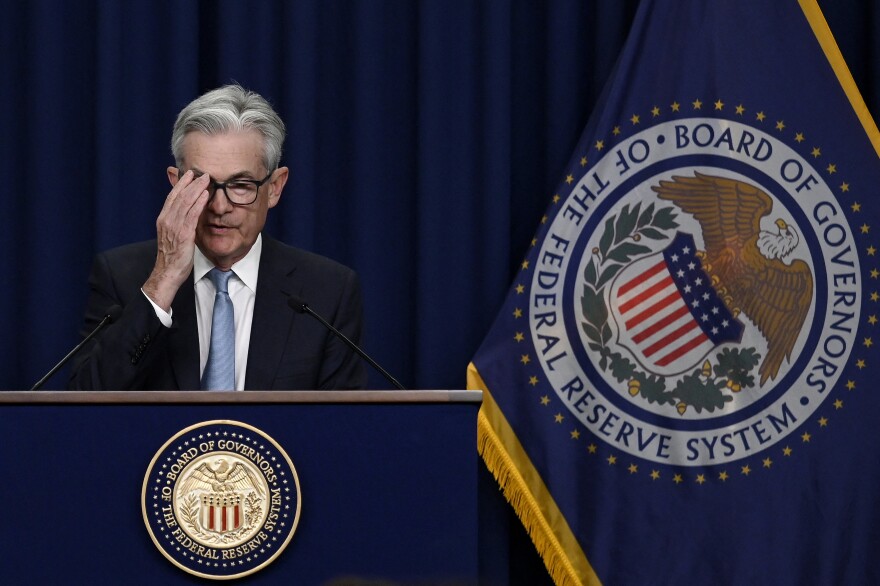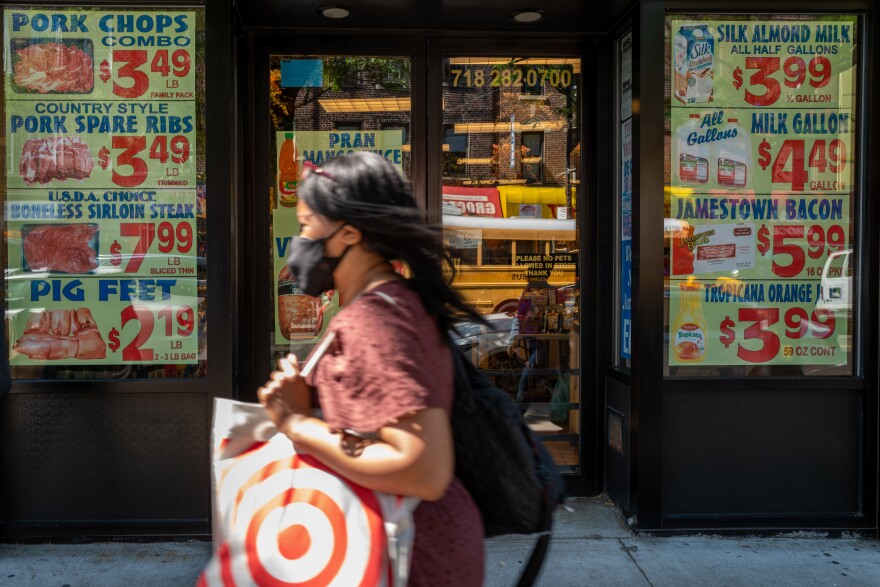The Federal Reserve has hiked its benchmark interest rate by 0.75%.
But what does that actually mean for hundreds of millions of Americans – Americans who have jobs, who buy things, who have bank accounts?
In short, interest rates are the Federal Reserve's main tool to combat inflation. Inflation is driven by strong consumer demand. By raising interest rates, which makes things more expensive, the Fed is hoping to dampen Americans' willingness to spend money.
"It is essential that we bring inflation down if we are to have a sustained period of strong labor market conditions that benefit all," said Federal Reserve chairman Jerome Powell at a press conference after Wednesday's meeting.
And the Fed will continue to raise rates as needed throughout the year if inflation doesn't abate, Powell said. Its next meeting will be in late July.
"The Federal Reserve got inflation wrong. And now they're trying to correct their mistake by pretty quickly hiking interest rates. And that will slow the economy," said Aaron Klein, a senior fellow at the Brookings Institution, in an interview with NPR.
Generally speaking, as the Federal Reserve raises its benchmark interest rate, everything else in the economy that involves interest rates of some kind is affected – and that's most things: credit cards, student loans, home and car loans, banking, savings accounts, the everyday operations of businesses, you name it.
That means the stakes are high when the Fed raises rates, as it did on Wednesday.
"With inflation being as high as it is and seeing some softness in the U.S. economy, the Fed really has a very delicate balancing act this month and for the next couple of months," said Dave Sekera, the chief U.S. market strategist at Morningstar.
Losers: People trying to buy a home right now
The Fed's interest rate isn't directly tied to mortgage rates. But mortgage lenders move their rates up and down based in part on what they expect the Fed to do.
With inflation so bad right now, mortgage rates have been rising all spring.
Today, the average 30-year rate is well above 6%, according to Mortgage News Daily. Earlier this year, a 30-year fixed-rate mortgage could be had for around 3.25%.
Given a loan of $400,000, the rise in interest rates has turned a monthly mortgage payment of about $1,700 into one approaching $2,500 in the span of just a few months.
"Housing is getting less affordable for everyone at every level," said Daryl Fairweather, chief economist at Redfin.
That rapid increase in cost has already priced some potential homebuyers out of the market. Mortgage applications for home purchases in June were down more than 15% compared to last year, according to the Mortgage Bankers Association.
(Mortgage rates have historically been higher, especially in the 1980s, when rates topped 15% amid the Fed's efforts to fight the inflation of the 1970s. But home prices now are higher than ever, having risen dramatically in many areas over the past two years.)
Economists have mixed outlooks on what all this means for the housing market. Some say that home prices will hold steady; others are forecasting a drop in prices.
At today's Fed meeting, Powell suggested that prospective homebuyers wait to see if prices stabilize.
"I would say, if you're a homebuyer, a young person looking to buy a home: You need a bit of a reset. We need to get back to a place where supply and demand are back together and where inflation is down low again and mortgage rates are low again," he said.
Winners: People who have money in savings accounts
This one is modest, but noteworthy. With interest rates so low for the past few years, banks had little reason or wiggle room to offer any meaningful interest rates on personal savings accounts, where you might keep money for your emergency fund or a down payment savings.
Ever since the pandemic began and the Fed dropped interest rates, the average interest rate for a typical savings account hovered around 0.06%, according to the FDIC.
Now, with the Fed's benchmark rate rising, interest rates are ticking up, too. Some banks, especially internet banks, are starting to offer interest rates on savings accounts of 1% or more.
It's important to know that the Fed rate isn't the only factor that banks take into account when setting interest rates. Banks also take into account how much cash customers have deposited and how much competitors are offering. So don't expect to see rates rise by .75%.
And, of course, those interest rates remain lower than current inflation rates, meaning that the real value of those savings will still decrease over time.
But for people who need savings to be accessible without the risk of a stock market drop – like emergency funds or a down payment for a new home or car – 1% is better than nothing.
Other savings vehicles that offer a mix of accessibility and growth rate, like CDs and I Bonds, are also offering higher returns than in past years.

Losers, most likely: All of us, in the short-term
At the heart of Wednesday's interest rate hike is a tightrope walk: The Fed is trying to slow inflation without triggering a recession and the layoffs that would come with it.
But even with the Fed's thumb on the scale, some of what's driving inflation is outside of officials' control. The war in Ukraine, for instance, has helped drive up oil and commodity prices, along with the ongoing supply chain disruptions caused by the pandemic.
As a result, inflation has stayed hot. And that's making the Fed's tightrope walk more difficult.
"I think that what's becoming more clear is that many factors that we don't control are going to play a very significant role in deciding whether that's possible or not," Powell said Wednesday. "It's not going to be easy."
Economists have grown increasingly pessimistic about the Fed's ability to pull off the so-called "soft landing."
In a note to clients today, Wells Fargo economists wrote: "Indications that inflation is becoming more entrenched in the U.S. economy has caused the Federal Reserve to become even more hawkish. We now judge that recession next year is more likely than not."
And a survey of economists published this week by the Financial Times and University of Chicago found that most expect a recession to begin next year.
That means the U.S. could see widespread layoffs – even as inflation is still high, and Americans are paying higher prices for things like food and gas. "We're not looking to have a higher unemployment rate, but I would certainly look at that as a successful outcome," Powell said today.
Winners, hopefully: All of us, in the long-term
The Fed's goal with the interest rate hikes, today and down the road, is bringing the inflation rate down to 2%, while keeping unemployment around 4%. If they're able to achieve that, that means they were successful at their goal of a soft landing. (Or a "soft-ish landing," as Powell put it in May.)
"I do think it's possible," Powell said Wednesday, emphasizing how strong the economy and labor market currently are.
While economists are starting to feel pessimistic about the odds of avoiding a recession, it's still possible. Americans just have to be patient while things play out, they say.
"Monetary policy takes time to act. There's a long lag between when the Fed moves this week, when it moved before and when that trickles through the economy," said Klein of the Brookings Institution. "It can take up to a year before the full effect of a Federal Reserve interest rate hike is felt on the real economy."
But if the Fed sticks the landing, inflation could get back to normal – alongside a healthy labor market with wages and consumer demand in balance.
Copyright 2022 NPR. To see more, visit https://www.npr.org. 9(MDAyNDY5ODMwMDEyMjg3NjMzMTE1ZjE2MA001))





